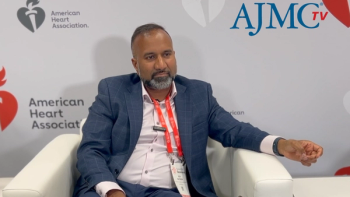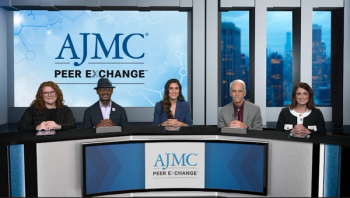
Bridging the Gaps: New Strategies for Preventing Cardiovascular Disease

Key Takeaways
- Cardiovascular disease prevention now requires a multidisciplinary approach, integrating cardiology with endocrinology, nephrology, and liver specialties.
- Lipoprotein(a) and urine albumin-creatinine ratio are emerging risk factors, with guidelines recommending lifetime testing to enhance awareness and preventive practices.
During the Addressing Cardiovascular Risk and Intervening Early webinar, experts discussed innovative strategies for cardiovascular disease prevention, emphasizing risk assessment, lifestyle changes, and collaborative care to improve patient outcomes.
Cardiovascular disease remains a crisis in the United States, and at a recent webinar from The American Journal of Managed Care® in association with the American Society of Preventive Cardiology, researchers and clinicians confronted the persistent gaps in prevention. Watch the
The discussion, moderated by Viet Le, PA-C, associate professor of research at Intermountain Health, revealed a field in transition that includes a new understanding of the interconnected risks for cardiovascular disease from kidney health and metabolic dysfunction.
“Cardiovascular disease itself…has this long fuse,” Le said. “I think of that, because the question always is, how do we have patients understand [the importance of] lifestyle changes, etc, and it can be hard to see those risks when that fuse is so long, so far ahead.”
While clinicians have appreciated the interconnectedness of cardiovascular-kidney-metabolic health for a while, an exciting change has been the development of drugs to change this risk, explained Martha Gulati, MD, MS, FACC, FAHA, FASPC, FESC, cardiologist at the Cedars-Sinai Medical Center Schmidt Heart Institute, professor of cardiology and associate director of the Barbra Streisand Women’s Heart Center, and director of cardiovascular disease prevention.
Addressing prevention of cardiovascular disease takes more of a team effort now, with cardiologists working with endocrinologists, nephrologists, and liver specialists instead of treating patients in silos, she said.
“I do think that all cardiologists need to be identifying who's at risk. Whether everybody's going to be comfortable with treating this disease is a completely different discussion,” Gulati said. “Because I think what, hopefully, will happen, given the evolution of this field, is that preventive cardiologists are going to be more appreciated. I think it is really becoming a specialty unto itself.”
She added that training people as preventive cardiologists means thinking about the disease in a new way, such as watching patients with calcium in their coronary arteries or aorta, because this now puts them into a stage that can progress.
Starting on prevention for patients who are at risk runs into 2 main barriers: inaction and lack of access to care. Alison Bailey, MD, FACC, FASPC, chief of cardiology at Centennial Heart and a physician director of cardiovascular disease for HCA Healthcare, explained that often cardiologists will meet patients after they have an event or have already been dealing with uncontrolled hypertension or lipids for 2 decades.
“Instead of meeting these people up front, when we really could make more of a profound impact, we're meeting them sort of on the tail end, after they have established disease,” she said. “I would say it's never too early to get a referral…”
As someone who works in the South, Bailey often sees how big the challenge of access to care is in rural areas. Not only do these patients have trouble finding a physician or care team to go see, but they may also lack insurance or be underinsured, which are big barriers when dealing with lifetime, chronic disease.
Cardiovascular Risk Factors
Lipoprotein(a) (Lp[a]) is an emerging risk factor that has become a hot topic in the preventive cardiovascular space in recent years because it is 6 times more atherogenic—meaning it contributes to the development of atherosclerosis and cardiovascular disease—than low-density lipoprotein (LDL). However, a very small number of patients actually get tested for Lp(a).1
However, updated guidelines from the National Lipid Association2 call for adults to get tested at least once in their lifetime, which should help raise awareness, said Nathan Wong, PhD, MPH, FACC, FAHA, FNLA, FASPC, professor and director of the Heart Disease Prevention Program at the Mary & Steve Wen Cardiovascular Division and codirector of the Center for Global Cardiometabolic Health and Nutrition at the University of California, Irvine.
“We know that people who get tested—there's some data published showing that this does seem to motivate greater initiation of lipid-lowering therapy and other preventive practices,” he said.
For children with a family history of cardiovascular disease or familial hypercholesterolemia, they should get tested in later childhood or adolescence, Wong said. Gulati added that while most people only need to be checked once in their life, women should get rechecked if they were borderline once they go through menopause, because there is an increase in Lp(a).
Bailey noted that some people don’t want to check Lp(a) at all because they think it’s not actionable, but she thinks it is. Although there aren’t specific therapies available, there are multiple therapies on the horizon.
The urine albumin-creatinine ratio is another emerging risk factor. It looks at protein in urine, and there are therapies that can be initiated if it is elevated, she explained. Coronary calcium is also a marker of future risk, which can be modified with statin therapy.
However, risk assessments are limiting, and it’s important to personalize risk assessments to the person in front of you, Gulati said. She sees a lot of young women, and “regardless of the tool I use, if you’re under 40 [years old], you’re low risk. It just doesn’t matter. You can plug in the worst numbers for every risk factor, and they will still be low risk.”
Addressing Risk Factors
Patients with cardiovascular risk factors mostly know the right things to do and want to do the right things, such as eat healthy and exercise. However, there are many reasons why patients cannot exercise or eat healthy, and they may get overwhelmed when they’re told to make lifestyle changes and also start medication.
“We might be able to say things like, ‘Eat less, move more,’ but are we as good at prescribing it?” wondered Gulati. “Are we really good at making people understand the diet and how they should be focusing and how to implement exercise?”
Telling a patient that they need to do 150 minutes of exercise may sound like too much, but they could start with just 5 minutes every day and build from there. It’s also important to give them additional resources, such as going to a dietitian or an exercise physiologist or finding a community program they can join. Clinicians cannot change a patient’s environment or create safe places, but they can find what does exist and how it can benefit the patient.
However, these preventions are not always covered by insurance. Cardiac rehab for patients with cardiovascular disease who meet certain criteria could be covered, and Gulati said she’s had success getting a dietitian covered. Getting trainers and referrals to exercise physiologists that are covered for primary prevention is harder.
“I always tell people to go back and talk, call their insurer, and say, ‘What do you cover in terms of my wellness?’ You'll be surprised,” she said. “There's more of that these days than there was, but it's still lacking.”
Wong noted there’s a need to get medical nutrition therapy better covered, and he has hope that legislation could expand it beyond mostly just patients with diabetes.
A lot of health savings accounts will cover gym memberships or trainers, though, Bailey said. She also recommends patients utilize health apps more to track their activity and stay accountable. She echoed Gulati’s point that 5 minutes of exercise daily is better than zero minutes.
“Optimal should never, ever be the opposite of what is achievable and what we can do today,” Bailey said. “And you know, when we're looking at population health…if we can get that group of people who do zero minutes of activity [to do] 10 [minutes of] activity, we probably would make way more [progress] to our goal of preventing disease than getting people going from 20 to 30 [minutes], or 30 to 50 [minutes], or 50 to 75 [minutes], and so I think those small changes are important.”
References
1. Bansal A, Cho L. Prevalence of lipoprotein(a) testing in a contemporary cohort. Circulation. 2025;151(9):649-651. doi:10.1161/CIRCULATIONAHA.124.070361
2. Koschinsky ML, Bajaj A, Boffa MB, et al. A focused update to the 2019 NLA scientific statement on use of lipoprotein(a) in clinical practice. J Clin Lipidol. 2024;18(3):e308-e319. doi:10.1016/j.jacl.2024.03.001
Newsletter
Stay ahead of policy, cost, and value—subscribe to AJMC for expert insights at the intersection of clinical care and health economics.




























































